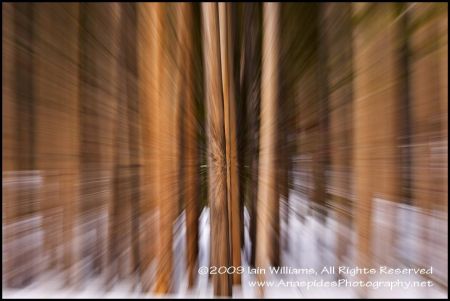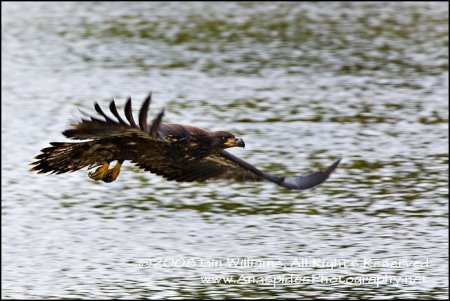Pan, Motion and Zoom Blur Technique - Improve Your Creativity
 Tuesday, May 5, 2009 at 8:42PM
Tuesday, May 5, 2009 at 8:42PM  You know sometimes when your in the field and things get slow; the animals are hiding, the weather is bad, or the images are just not there. Well, instead of packing your gear away, why not try something new and creative.
You know sometimes when your in the field and things get slow; the animals are hiding, the weather is bad, or the images are just not there. Well, instead of packing your gear away, why not try something new and creative.
Recently, when I was in Yellowstone National Park, there was a few hours which were quite dead wildlife and landscape wise. Rather than hide, I decided to play around with a zoom blur using my Canon 70-200 f2.8 zoom lens. The results do not please everyone, however, this technique is well worth mastering and adding to your palette of skills.
So how is a zoom accomplished?
The technique is relatively easy, but results vary depending upon how fast or slow you manipulate the zoom on your lens and what combination of shutter speed, ISO and f stop you select.
- First, switch your camera to M mode (manual mode).
- Auto focus on a subject conducive to zooming (such as the trees in the image), then turn off auto focus once focus lock has been acquired (or use manual focus).
- Next, ensure you have a relatively slow shutter speed. I prefer 1/25 or slower, so using a tripod is advantageous. It's important to have a slow shutter speed to allow time for you to zoom the lens while light is falling on the digital sensor. Play about with different settings to achieve the results and blur that you desire - The f stop is not that important, but obviously in well lit situations you will need a high f stop (ie f16) to enable a slow shutter speed.
- Depress the shutter and while the lens is open smoothly zoom the lens. Depending on the effect you desire, you may want to zoom in or zoom out.
Have fun with the new technique and watch as you creativity increases.
Pan / Motion Blur
 Animals move, and most species can move very fast when they want to.
Animals move, and most species can move very fast when they want to.
Traditionally, the idea has been to capture the animal in the moment; in other words, the bird will be frozen in mid flight or the wolf will be frozen in mid stride. There is nothing wrong with this technique, however, the image won't show fluidity, movement, or speed.
To instil movement into another wise still subject can be tricky, but not impossible. The idea is to use a slow shutter speed and pan the camera and lens at the speed the animal is moving. I usually start left and move towards the right panning the camera as the animal moves. it's important to always follow through with the pan; do not stop halfway but follow the animal fully to the right to the end of the pan. How slow a shutter speed depends on how much you want the background blurred and whether you want additional movement in the animal. I would suggest starting out at 1/25th and going from there.
This will create a sharp image of the animal and blur the background. The image of the animal is sharp because the camera and lens are moving at more or less the exact speed of the animal as you pan. The blurred background instils movement.
Motion Blur
But, as with many things in life there are usually several subsets to the above rule. When photographing birds, I like the bird to be blurred somewhat as this implies power and speed to the image.
For example, I made several photographs of this Golden Eagle (Aquila chrysaetos) in Alaska. The sharp images we're nice, but they lacked motion; they appeared very flat and descriptive looking. By lowering the shutter speed and waiting for the bird to fly, I panned the camera and lens left to right. The shutter speed wasn't quite high enough to freeze the movement of the wings and body of the bird, and this created the appearance of movement. The pan/motion was quite fast and the shutter speed was 1/320th at f10 ISO 400.
Don't believe me - Go the park, find some pigeons or sea gulls and trial the technique.



Reader Comments (2)
very useful blog and thanks for sharing your techniques. very helpful.
Akif
Thanks Akif - it's nice to know that some parts of the blog are useful to others....Iain